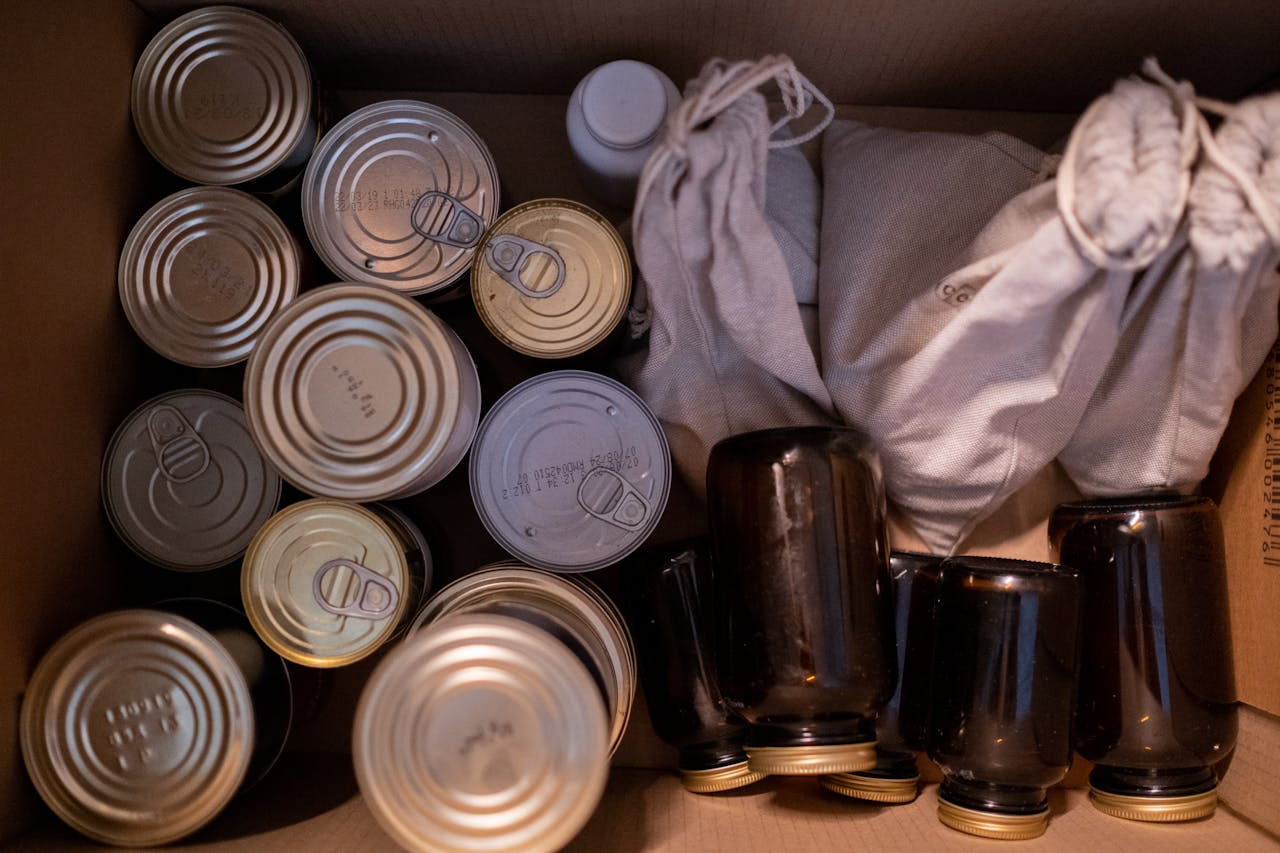In the world of food storage, knowing how to keep non-perishable items fresh as long as possible is a vital skill. After all, these foods form the backbone of your pantry. They provide the basis for countless meals and can truly be lifesavers in times of need. Here, we will delve into the art of storing non-perishable food items, ensuring that you make the most of their longevity.
Understanding Non-Perishable Foods
Before we delve into storage, it’s important to understand what non-perishable foods are. These are foods that can withstand long-term storage without refrigeration or freezing. They’re often canned or dried and include items like beans, rice, pasta, canned vegetables, and canned meats.
Also read : How can you make your dishwasher more eco-friendly?
These foods are popular because they’re convenient and can last for months, sometimes even years, if stored correctly. But just because they’re non-perishable doesn’t mean they will remain in good condition indefinitely. Their quality, taste, and nutritional value can degrade over time. Proper storage techniques are key to extending their shelf life and keeping these foods fresh and safe to eat.
The Basics of Storing Non-Perishable Foods
To maximize the shelf life of non-perishable foods, you should consider several key factors: the storage environment, the condition of the food, and the storage container.
Have you seen this : How can you make your dishwasher more eco-friendly?
The environment should be cool, dry, and dark. High temperature, moisture, and exposure to light can accelerate the degradation of food. For long-term storage, the temperature should ideally be below 70°F, and the area should be well ventilated to prevent moisture build-up.
When storing non-perishable foods, you should always inspect the foods first. Any signs of damage or spoilage, such as dents in cans or pests in grains, should be addressed immediately to prevent the spread.
The storage container should also be airtight to keep out pests and prevent oxidation. Glass jars with airtight lids, food-grade plastic containers, and vacuum-sealed bags are all good options.
Handling Canned Foods
Canned foods are a staple in many kitchens due to their long shelf life. They’re also easy to store and require minimal effort to keep fresh.
To store canned foods, keep them in their original containers until you’re ready to use them. Store them in a cool, dry place away from direct sunlight. Pay attention to the expiry dates and use a "first in, first out" system – use the oldest cans first and put the newly bought cans at the back.
One important tip to remember is to never store canned foods in places where they may freeze. The freezing and thawing process can cause the can to warp or rupture, allowing bacteria to enter and spoil the food.
Storing Dry Foods for Long-Term
Dry foods such as grains, pasta, and beans are ideal for long-term storage. These foods can last for years when stored correctly, providing a dependable source of nutrients when fresh foods are not available.
Dry foods should be stored in airtight containers in a cool, dry, dark place. A pantry or a dedicated storage room is perfect. Remember to keep the containers off the floor to prevent moisture absorption and pest infestation.
One way to extend the life of dry foods is by using oxygen absorbers. These small packets absorb oxygen in the container, reducing the risk of oxidation and spoilage. They’re inexpensive and can be found in many supermarkets or online stores.
Tips for Keeping Non-Perishable Foods Fresh in the Fridge
While most non-perishable foods can be stored at room temperature, some, like certain canned goods and condiments, can benefit from being stored in the fridge after opening. By doing so, you can extend their shelf life and keep them tasting fresh for longer.
When storing non-perishables in the fridge, make sure to transfer them to an airtight container if they’re not in a resealable package. This will prevent the food from absorbing odors from other foods and keep it fresh.
Remember to label your containers with the date of opening. This will help you keep track of how long the food has been in the fridge and when it needs to be used by. As a general rule, opened canned goods should be used within 3-4 days, while condiments can last several months in the fridge.
Rotating Non-Perishable Food Items
To maximize your food storage and ensure food safety, it’s crucial to rotate your non-perishable food items. Instituting a "first-in, first-out" system allows you to utilize your oldest goods first, thereby reducing waste and maintaining a fresh stock.
Start by keeping an eye on the dates on the labels of your food items. When you purchase new goods, place them at the back of your storage space, pushing the older products to the front. This way, you’ll use up the oldest food items first. Remember, even though these are non-perishable items, they can still lose their taste and nutritional value over time.
It’s also beneficial to keep a record of your stock. This will not only help you with rotation but also with maintaining a balanced and varied food supply. It’s advisable to have a variety of non-perishable foods, including grains, canned goods, dried fruits and vegetables, and canned or freeze-dried meats and poultry, to cater for different meals and nutritional needs.
Remember, every few months, take some time to check your stock. Look for any signs of damage to packaging, such as dents in cans or tears in bags. Also, check for any signs of spoilage, such as mold or pests. By doing these checks, you are not only ensuring the longevity of your food but also maintaining the safety of your food supply.
The Importance of Proper Food Preservation Techniques
The way you store your food can greatly affect its shelf life. Proper food preservation techniques are key to maintaining the quality of your non-perishable foods for a long time.
Always store food in storage containers that are airtight. This prevents air, which often carries contaminants and can accelerate the degradation of food, from entering. Glass jars with airtight lids are excellent for this purpose, but you can also use food-grade plastic containers or vacuum-sealed bags.
The place where you store your food matters too. Non-perishables should ideally be stored at room temperature in a cool, dry, dark place. This reduces exposure to heat and light, which can accelerate degradation, and it also helps to prevent moisture build-up, which can lead to the growth of mold or bacteria.
Finally, remember to keep your storage area clean. Regularly clean and disinfect your storage shelves and containers to avoid any contamination that could spoil your food.
Conclusion
Proper storage of non-perishable food items is an essential skill that can maximize the shelf life of these goods. By understanding what non-perishable foods are and what they require for storage, you can maintain the quality, taste, and nutritional value of these items.
Remember, the ideal storage environment is a cool, dry, dark place. Rotate your food supply to ensure you consume the oldest items first. Always check the condition of your goods and store them in airtight containers. Some items may benefit from being kept in the fridge after opening, and proper labeling can help you keep track of their freshness.
By following these guidelines, you can help ensure that your pantry remains well-stocked with fresh, safe-to-eat non-perishable foods, ready to serve at a moment’s notice. Whether you’re preparing for a disaster, stocking up for a busy time, or simply maintaining a well-stocked pantry, proper food storage is key to maximizing the shelf life of your non-perishable food items.






